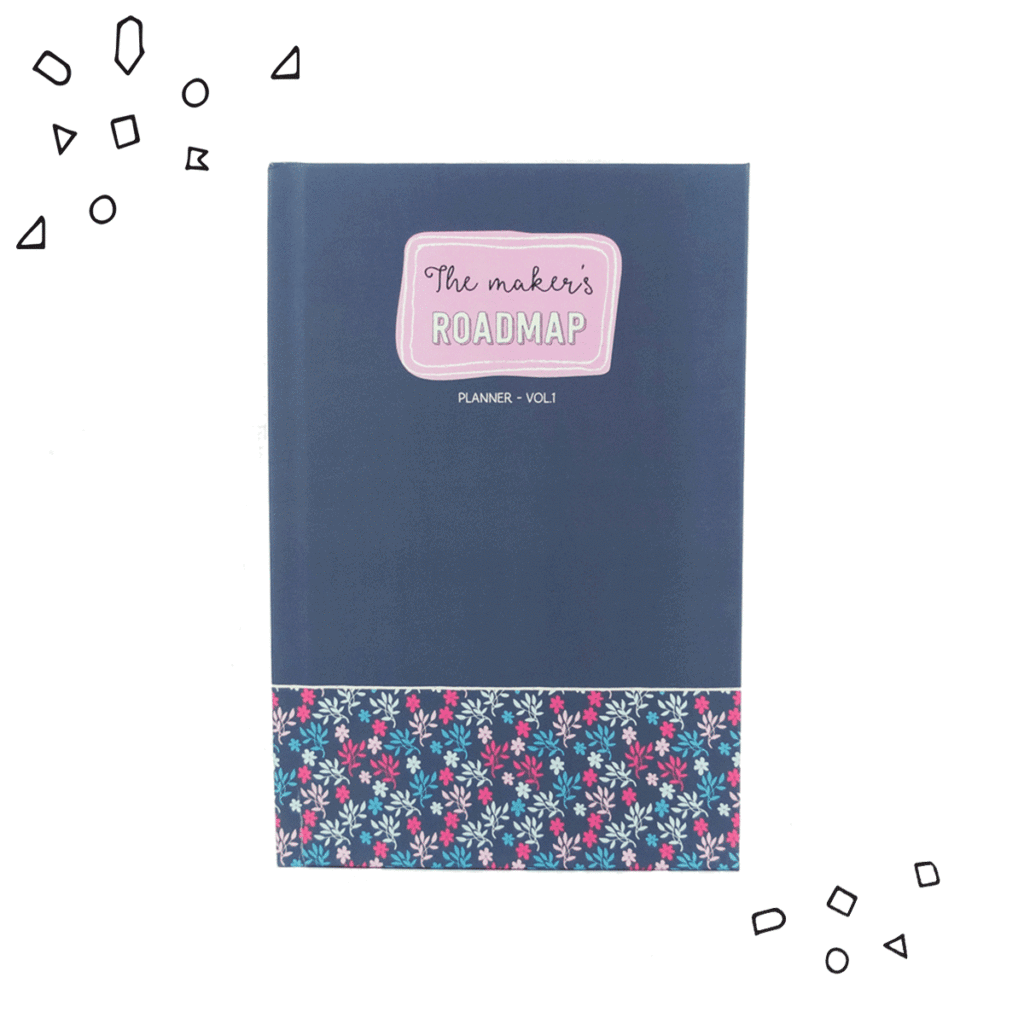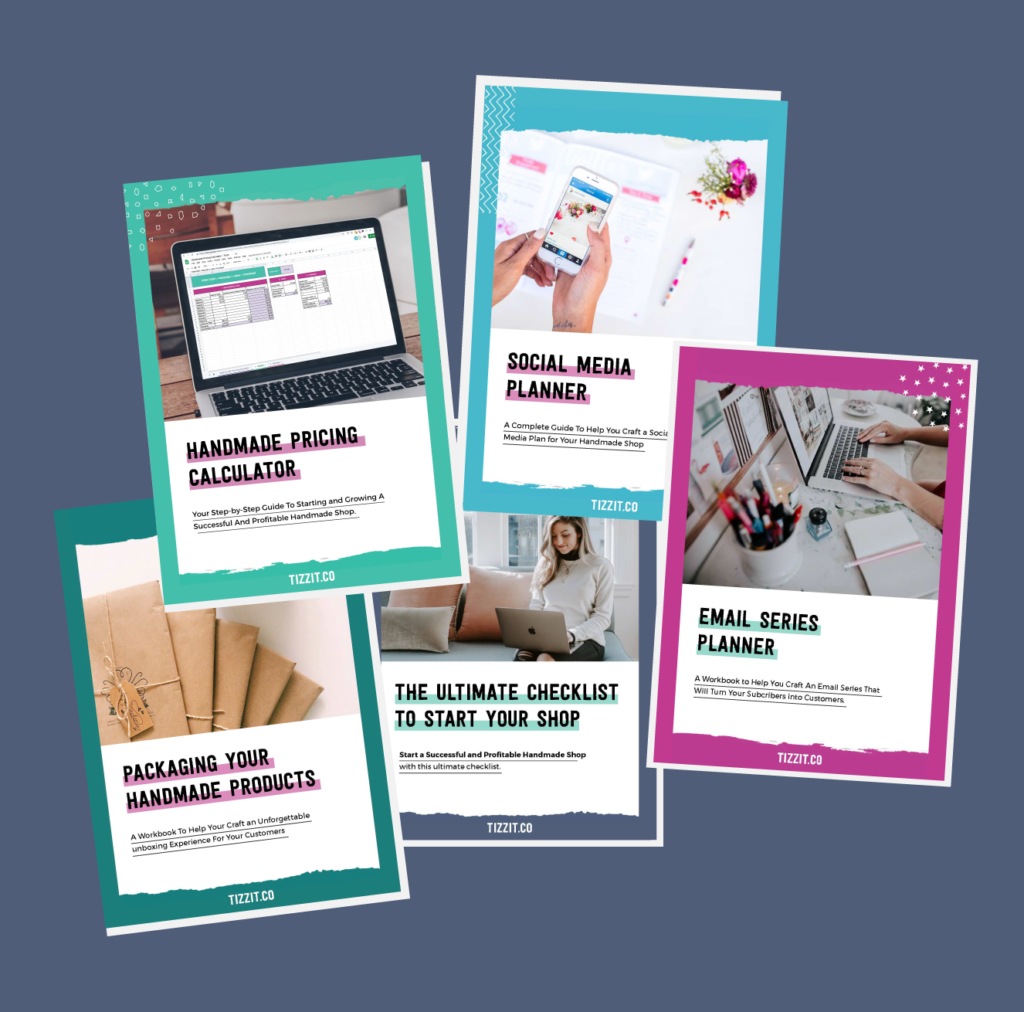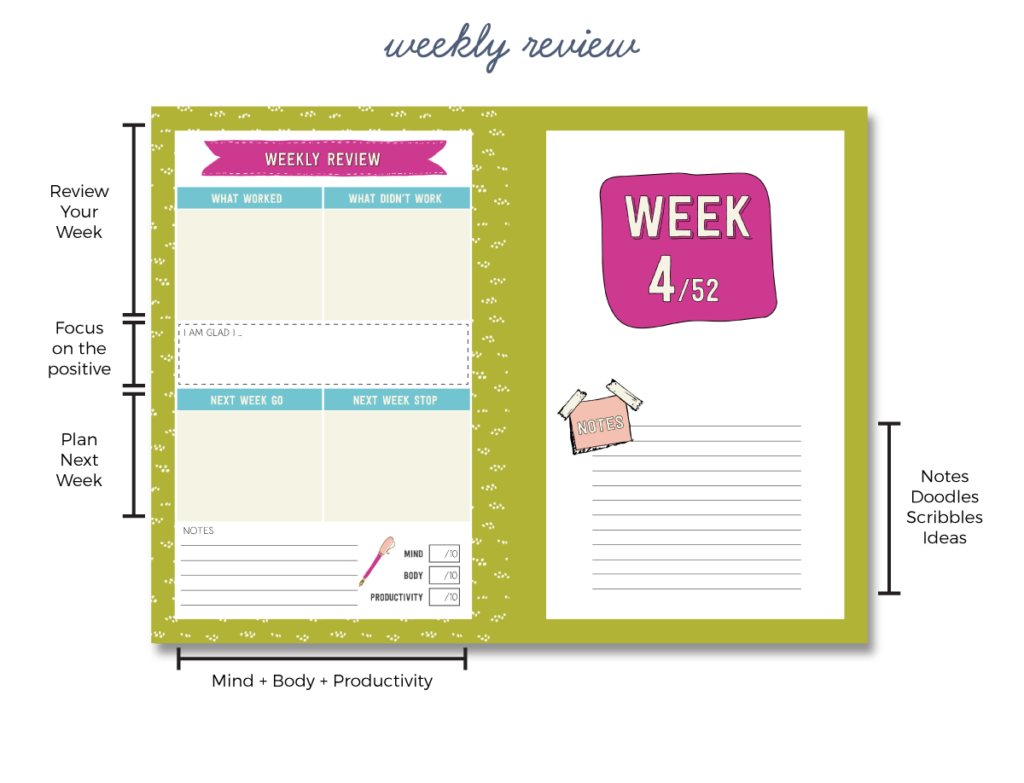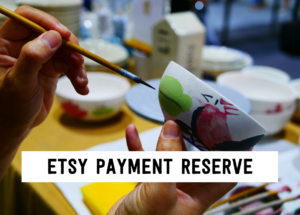
How to find the best Etsy keywords in 3 simple steps using Alura
If you want to be found in search results on Etsy, you need to optimize your product listing for SEO. And if you want to
join
You’ll need a simple weekly spread and a piece of paper. If you already have your favorite planner/journal/diary/calendar and it has a weekly spread then use that.
For the purpose of demonstrating I am using example pages from my planner – The Maker’s Roadmap.

Do you feel like there’s simply not enough hours in a day to get everything on your growing to-do list done?
Meet the Maker’s Roadmap Planner, a life and business planner created just for makers and handmade shop owners and designed to help you stay focused, be more productive.
“Disclaimer”: this is what I do and I know it works for many other people too – but in the end, you have to find a system that works for you. I am just giving you an option here. If it’s this one – great!
The first step is actually quite easy and it is to pick a day when you will plan for the week ahead. It can be Friday, Sunday, or whatever day you choose. Mine is Friday or if I don’t have the time for whatever reason – Sunday. It’s actually better when it’s Friday as I’m not thinking about ALL THE THINGS over the weekend.

FREE WORKBOOKS, CHEAT SHEETS, AND RESOURCES TO HELP YOU START, GROW AND PROFIT FROM YOUR HANDMADE SHOP.
Next step is a weekly review. I actually hate reviews – they take so long! I don’t have time to write several pages. They are still important though, so I had to make it quick. I’m using a system of 4 boxes:
I’m using the weekly review pages of The Maker’s Roadmap Planner, but you can use a piece of paper or a “notes” section in your planner to do that.

I always start with what worked and what didn’t work. It’s very easy to just look at your to-do list, see what you haven’t done yet and just move it to the new week, but that doesn’t really help you. You should be asking yourself why you got to do some tasks and not the others.
What worked might be anything that helped you do the tasks and made you more productive. On the reverse, you want to also list what didn’t work. It might be that you underestimated how long a task would take. Write it down because you’re learning from it and next time you’ll know to for example book 4 hours instead of 1 to photograph your products.
The next boxes are all about what you want to be focusing on next week and what you want to stop doing next week. It might be a project that you know is distracting you, or something that you started learning that you shouldn’t be learning right now (like an Instagram webinar but your focus now should be on Pinterest).
It’s super quick, and you really don’t have to write a few pages (unless you want to!).
What we’re doing here is to try to remind ourselves where our focus is and where it should be. I’m not going to go into much detail about it as I will make a separate blog post about how I plan yearly and monthly and how those projects fit in all this. In short, it’s all about thinking what are your big projects for this quarter for example, and how are you going to focus on completing them next week.
I’m using The Maker’s Roadmap Planner, there’s a section for it (“I’m working on”) in the weekly spread:

Again, you can use any planner that you already own or even put a sticky note with your projects on your weekly spread – make it work for you.
Non-negotiables is the stuff you can’t move. There are things you can get away with not doing or rescheduling, but some things you just can’t negotiate. Everyone will have a different set of things we have to work around, depending on the specific circumstances – it might be your job, driving kids to school, appointments etc. Let’s put those in your planner and block this time off before you even look at your to-do list.
I really want you to pay attention to this step because it’s very important. There are some tasks that you can interrupt, come back later and pick up where you left off easily – social media, emails, Etsy conversations etc. There are also some tasks that require more focus from you for a few hours – like batching product photography, creating a marketing plan etc. Those are things that you can’t really do in 10 minutes slots of time. That’s where the “nothing else matters” time slot comes in. It’s time to work on those tasks and it becomes a non-negotiable.
What I’d like you to do is to think of a time during the week where ‘nothing else matters’ and you’re just going to work on your business. Routine is very important so I’d recommend the same time every week. This should be at least a two-hour block – longer is better, but two hours is minimum. This may mean you will have to fit it in during the weekends if you can’t do it during your week. Write this time down in your calendar and stick to it. Share it with your family and even friends so they know that at this time you’re going to be working on your business.
It’s made a big difference in my work. It’s all about making a daily focus – a theme for the day. I’m looking at my week and I’m trying for each day to have a theme – for example, this Wednesday is for planning a new line of products. When you’re filling your planner with the items from your to do list, keep that in mind, and assign any tasks related to the new line to that day.
For the main project you’re focusing on, assign it to the day when you have your “nothing else matters” time slot. You can work on it on other days/hours outside the “nothing else matters” time slots, but scheduling it this way helps you really make sure you’re working on it and making it a priority.
The next step is all about filling in the rest of your week with your to-do list items. I have a whole blog post about mastering your to-do list here so I’m not going to dive in a lot of details now, but the idea is to break your to do list into as many small tasks and subtasks as possible and to guesstimate how long each of them would take. It’s not always a perfect hit – sometimes we guesstimate wrong, but it really helps. That way you know that you have 30 minutes to work right now and you can pick a task that will fit into that time slot. That’s a great way to beat the overwhelm because you know exactly what to do and you don’t lose 20 minutes out of 30 wondering what to do and where to start. It really helps to fit work in those tiny gaps you have in your day.
That’s my system. I hope it helps. As I said, I’m using my The Maker’s Roadmap planner to plan my week, but you can use anything that works for you. My last tip is that if you have a job, a family and other commitments, just give yourself a break. Stop looking at people that are not in the same situation as you and comparing them to yourself. It’s fine to go slower if it’s all you can do at that time. Be nice to yourself!
Time management is one of those topics where we can all learn from each other, so if you have any tips, please let us know in the comments!
you might also like…
related articles

If you want to be found in search results on Etsy, you need to optimize your product listing for SEO. And if you want to

There has been a lot of talk in the Etsy community — and I mean A LOT of talk — about Etsy’s payment account reserve

Anyone who knows me knows that I am a HUGE advocate for using email marketing to grow and scale your handmade business. But you may
Sign up below and get instant access to a collection of FREE practical guides, workbooks, and checklists that will help you start, grow and profit from your handmade shop. (without pulling your hair out!).
disclaimer
subscribe to youtube
become a member
get in touch
We acknowledge and give thanks to the Budawang and Yuin people, the Traditional Owners of the land we work and live on. We pay our respects to all Aboriginal and Torres Strait Islander Peoples and elders past, present and emerging.
4-step Maker’s Roadmap System
Library of In-Depth Courses and Training
Live Monthly Coaching Sessions
A Supportive Online Community
close
We hate spam too. Unsubscribe at any time.
close
We hate spam too. Unsubscribe at any time.
close
We hate spam too. Unsubscribe at any time.

Get Instant Access to
The FULL Resource library